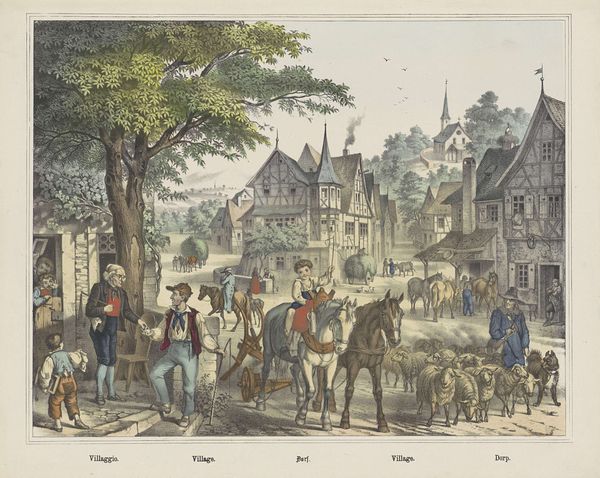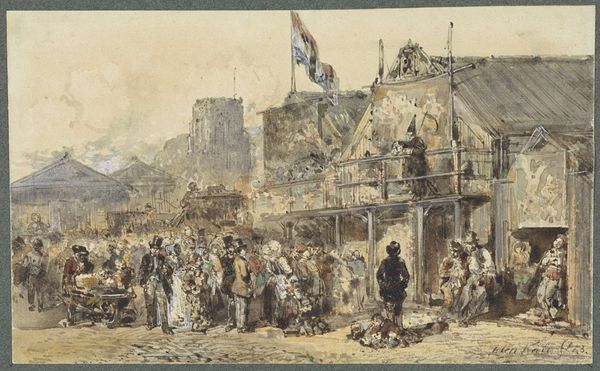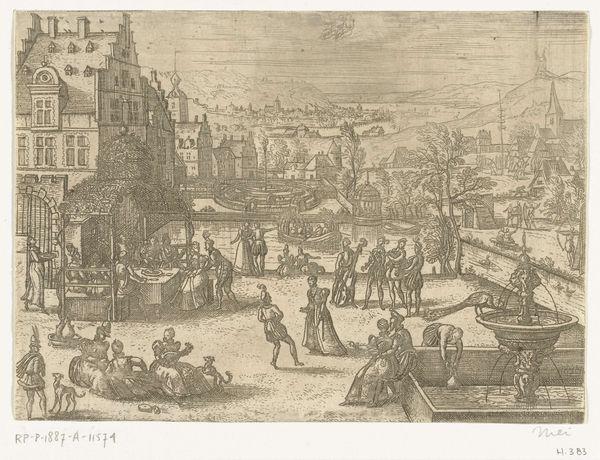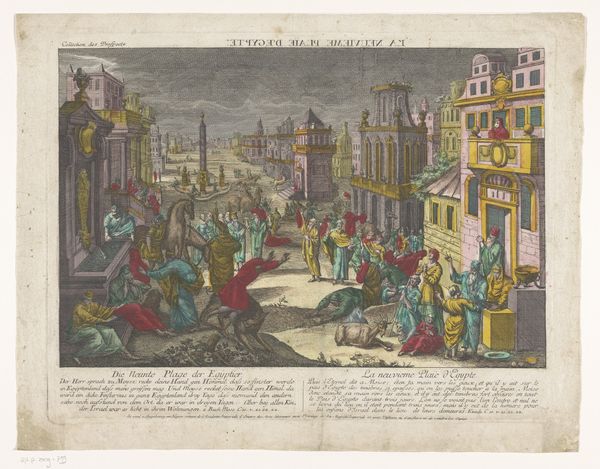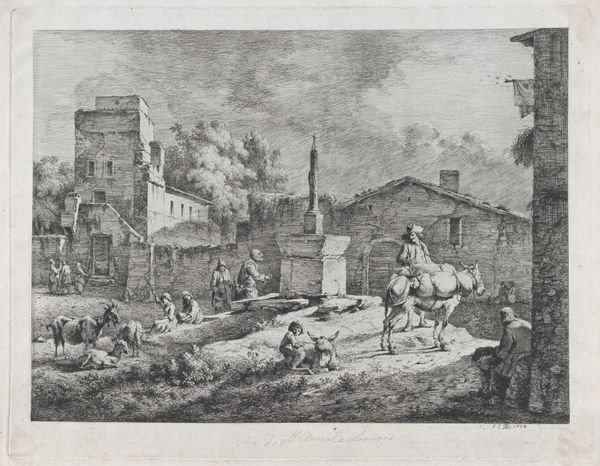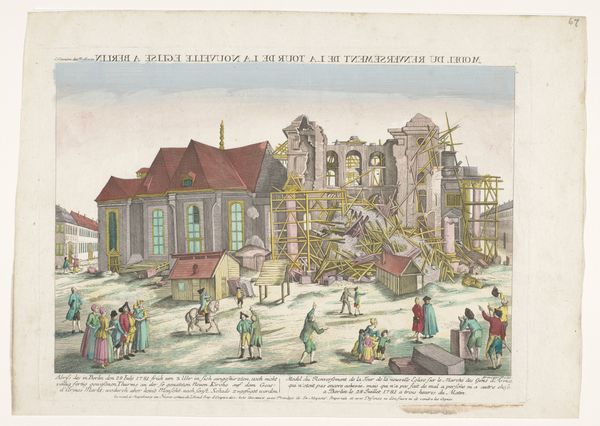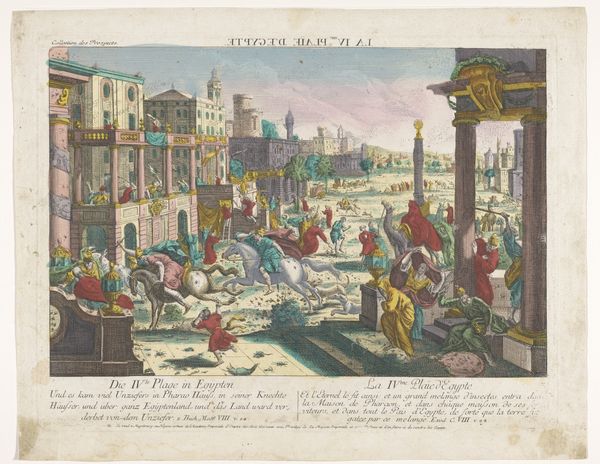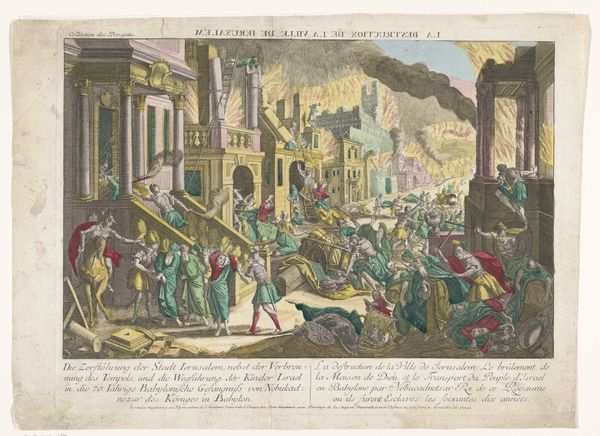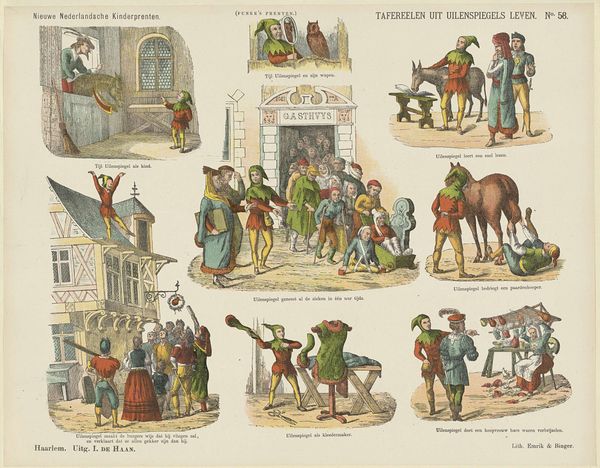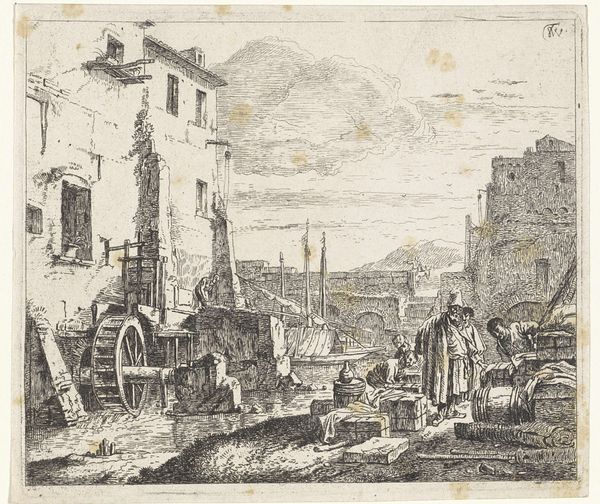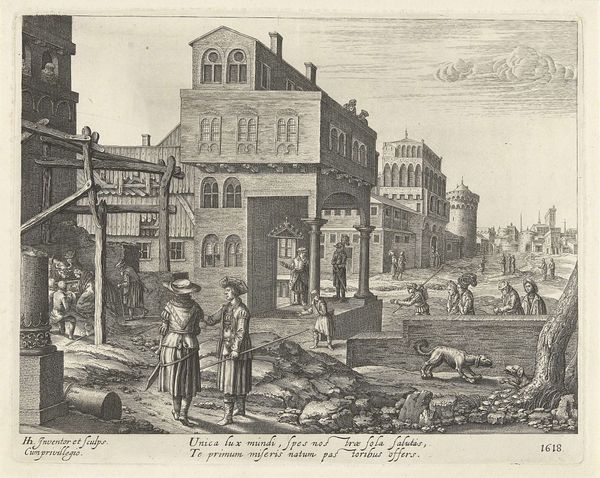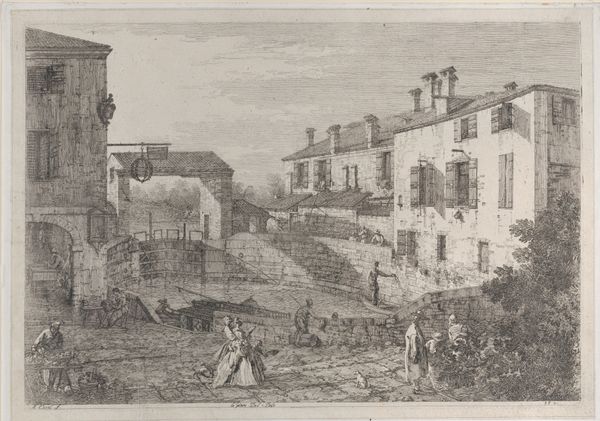
Dimensions: height 339 mm, width 419 mm
Copyright: Rijks Museum: Open Domain
Curator: This lively print, "Tenuta. / Ferme. / Bauernhof. / Farm. / Boerderij", likely produced between 1829 and 1880 by the firma Joseph Scholz, captures a bustling farmyard scene. What strikes you initially about it? Editor: Immediately, it’s the almost unsettling vibrancy despite the ostensibly bucolic subject matter. The density of forms—architecture, animals, figures—creates a tightly packed, slightly claustrophobic space. The composition feels very stage-like. Curator: It's certainly a dense composition. We should consider that the rapid urbanization happening in Europe during that period might create some tensions for an artist to choose the rural idyll. Perhaps Scholz romanticizes farm life but acknowledges industrial progress. Look at the prominent factory chimney in the background. Editor: The chimney is a potent visual element; that stark vertical contrasting with the horizontal sprawl of the farm. There is a very limited, desaturated colour palette. Blues and browns dominating to bring attention to details of farm activity that could point to more philosophical inquiries regarding art during this historical timeframe. Curator: Precisely. The title itself, rendered in five languages, points to a broadening, globalized audience, doesn't it? This also reflects shifting trade dynamics and the marketing of specific visions of national identity—how people perceived an authentic connection to land. Also, note how work is delineated: are the gender dynamics on the farm reinforcing stereotypes or gently subverting them? Editor: I appreciate you highlighting the globalized, performative nature and construction of a romantic ideal for consumption by the rising bourgeoise and aristocratic elite. But speaking from a Formalist perspective, it is so strange that no element really touches, intersects, or overlaps which lends to the unnerving visual density in this otherwise serene, albeit constructed, depiction. Curator: I think that uneasy tension is very revealing. Scholz, it seems, uses a traditional genre scene not to escape from modern anxieties, but to quietly reflect them. Editor: Yes, after having had the chance to consider context, what I previously dismissed as just “density,” really functions to emphasize the broader social commentary within the piece and historical timeframe. Thanks for widening my lens!
Comments
No comments
Be the first to comment and join the conversation on the ultimate creative platform.
